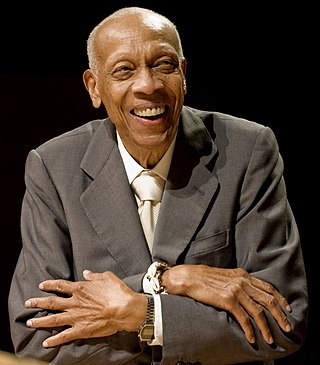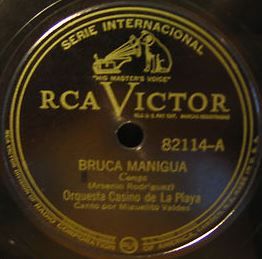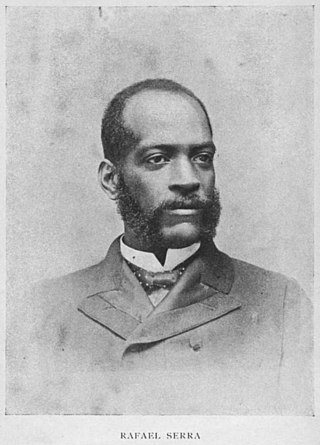| Club Atenas | |
|---|---|
 | |
| General information | |
| Location | Havana, La Habana Province, |
| Opened | 1917 |
| Design and construction | |
| Architect(s) | Luís Delfín Valdés |
Club Atenas was the best-known and most elite Afro-Cuban social club in Havana, Cuba.[ citation needed ]
| Club Atenas | |
|---|---|
 | |
| General information | |
| Location | Havana, La Habana Province, |
| Opened | 1917 |
| Design and construction | |
| Architect(s) | Luís Delfín Valdés |
Club Atenas was the best-known and most elite Afro-Cuban social club in Havana, Cuba.[ citation needed ]
Club Atenas was established in 1917 in Havana, Cuba. [1] The club was built by Luís Delfín Valdés, a Cuban architect. [2]
It was established by Havana's Black elites, with 68 lawyers, engineers, civil officers, and teachers among its founding members. Pantaleón Julian Valdés was the first elected president.
Apart from organizing dances and cultural events, it also planned travels both domestically and internationally. One such trip took place in 1954, when former First Lady Eleanor Roosevelt was given a bust of Cuban patriot Antonio Maceo. [3] Black Americans Langston Hughes, W.E.B. Du Bois, and Mary Bethune were among the guests received by the club. [4]
Following the Cuban Revolution, the Castro government seized Club Atenas in 1961 and converted the building into a daycare center.

Buena Vista Social Club was a musical ensemble primarily made up of Cuban musicians, formed in 1996. The project was organized by World Circuit executive Nick Gold, produced by American guitarist Ry Cooder and directed by Juan de Marcos González. They named the group after the members' club of the same name in the Buenavista quarter of Havana, a popular music venue in the 1940s. To showcase the popular styles of the time, such as son, bolero and danzón, they recruited a dozen veteran musicians, some of whom had been retired for many years.

Afro-Cubans or Black Cubans are Cubans of full or partial sub-Saharan African ancestry. The term Afro-Cuban can also refer to historical or cultural elements in Cuba associated with this community, and the combining of native African and other cultural elements found in Cuban society, such as race, religion, music, language, the arts and class culture.
Fernando Ortiz Fernández was a Cuban essayist, anthropologist, ethnomusicologist and scholar of Afro-Cuban culture. Ortiz was a prolific polymath dedicated to exploring, recording, and understanding all aspects of indigenous Cuban culture.Ortiz has been called the "third discoverer of Cuba", after Christopher Columbus and Alexander von Humboldt. A title first given to him by his secretary Rubén Martínez Villena and later echoed and published by Juan Marinello. Ortiz is widely recognized as a pioneering figure in postcolonial Latin American thought, as well as a foundational voice in African American anthropology. One of Ortiz's most influential contributions is his coining of the term "transculturation," which describes the complex process of cultural convergence and exchange.

Matanzas is the capital of the Cuban province of Matanzas. Known for its poets, culture, and Afro-Cuban folklore, it is located on the northern shore of the island of Cuba, on the Bay of Matanzas, 90 kilometres (56 mi) east of the capital Havana and 32 kilometres (20 mi) west of the resort town of Varadero.

Frank Grillo known professionally as Machito, was a Latin jazz musician who helped refine Afro-Cuban jazz and create both Cubop and salsa music. He was raised in Havana with his sister, singer Graciela.

Dionisio Ramón Emilio Valdés Amaro, better known as Bebo Valdés, was a Cuban pianist, bandleader, composer and arranger. He was a central figure in the golden age of Cuban music, especially due to his big band arrangements and compositions of mambo, chachachá and batanga, a genre he created in 1952.

Luciano Pozo González, known professionally as Chano Pozo, was a Cuban jazz percussionist, singer, dancer, and composer. Despite only living to the age of 33, he played a major role in the founding of Latin jazz. He co-wrote some of Dizzy Gillespie's Latin-flavored compositions, such as "Manteca" and "Tin Tin Deo", and was the first Latin percussionist in Gillespie's band. According to Rebeca Mauleón, "Few percussionists have played as integral a role in shaping Latin music as Luciano 'Chano' Pozo González".

Baseball was popularized in Cuba by Nemesio Guillot, who founded the first major baseball club in the country. It became the most played sport in the country in the 1870s, before the period of American intervention.

Juan Gualberto Gómez Ferrer was a Cuban revolutionary leader in the Cuban War of Independence against Spain. He was a "close collaborator of [José] Martí's," and alongside him helped plan the uprising and unite the island's black population behind the rebellion. He was an activist for independence and a journalist who worked on and later founded several pivotal anti-royalist and pro-racial equality newspapers. He authored numerous works on liberty and racial justice in Latin America as well.

"Bruca maniguá" is an afro-son composed by Arsenio Rodríguez in 1937. It was first recorded by Orquesta Casino de la Playa featuring Miguelito Valdés on vocals in June 1937. Ever since it has become a Cuban son standard, with famous versions by Abelardo Barroso, Sierra Maestra, Buena Vista Social Club and Ibrahim Ferrer. The song, which has been called "a landmark in the development of Cuban popular music" by Ned Sublette, was Arsenio Rodríguez's first hit and an example of his Afro-Cuban style of son within the afrocubanismo movement.

Mercedes Valdés Granit, better known as Merceditas Valdés, was a Cuban singer who specialized in Afro-Cuban traditional music. Under the aegis of ethnomusicologists Fernando Ortiz and Obdulio Morales, Valdés helped popularize Afro-Cuban music throughout Latin America. In 1949, she became one of the first female Santería singers to be recorded. Her debut album was released at the start of the 1960s, when the Cuban government nationalized the record industry. She then went on hiatus before making a comeback in the 1980s with a series of albums entitled Aché, in collaboration with artists such as Frank Emilio Flynn and rumba ensemble Yoruba Andabo. She also appeared in Jane Bunnett's Spirits of Havana and continued performing until her death in 1996.
Obdulio Morales Ríos was a Cuban pianist, conductor, composer and ethnomusicologist, an important figure in the late afrocubanismo movement. He championed Afro-Cuban music traditions and sponsored artists such as Merceditas Valdés.
Afro is a genre of Cuban popular music with African themes which gained prominence during the afrocubanismo movement in the early 20th century. It originated in the late 19th century Cuban blackface theatre, where some elements from Afro-Cuban music traditions such as Santería and Palo were incorporated into a secular context. As a result, black themes were occasionally portrayed in a stereotypical and derogatory manner. Nonetheless, many afros accurately depicted the working-class life of black communities in Cuba.
The following is a timeline of the history of the city of Matanzas, Cuba.

Cayo Hueso is a consejo popular (ward) in the municipality of Centro Habana, Havana, Cuba. A traditionally working-class neighborhood populated by Afro-Cubans, it is known for its many cultural landmarks such as the Callejón de Hamel, the Fragua Martiana Museum and the Parque de los Mártires Universitarios.
Antonio Medina y Céspedes was an Afro-Cuban poet and playwright, "among the most outstanding black intellectual figures of his time."

José Rafael Simón Agapito Serra y Montalvo was an Afro-Cuban intellectual who played a large role in supporting the Cuban War of Independence. He worked as a writer and editor for Spanish-language newspapers in the United States. He advocated for working class Cubans of color. He was a key figure in New York City, contributing to a larger movement for Cuban Independence happening across the United States.

Pantaleón Julian Valdés was a Cuban medical doctor, an activist of civil and political rights for black and mulatos in Cuba and a prominent voice for the Afro-Cuban intellectual elite. In 1917, Valdés became the first elected president of the “Club Atenas” a major twentieth-century Afro Cuban cultural and social center. Pantaleón Julian Valdés was a member of the Partido Independiente de Color (PIC) and he was arrested with other Independents in 1910 and 1912. Later when some prominent ex-members of the PIC were reincorporated into the political machinery, he was elected to the Havana Board of Education with the support of the Partido Liberal.

Havana Biltmore Yacht and Country Club, now Club Havana, was an exclusive sports and country club in Havana, Cuba.
La Conga, also known as La Conga nightclub or La Conga club, was a Cuban nightclub located in midtown Manhattan in New York City.